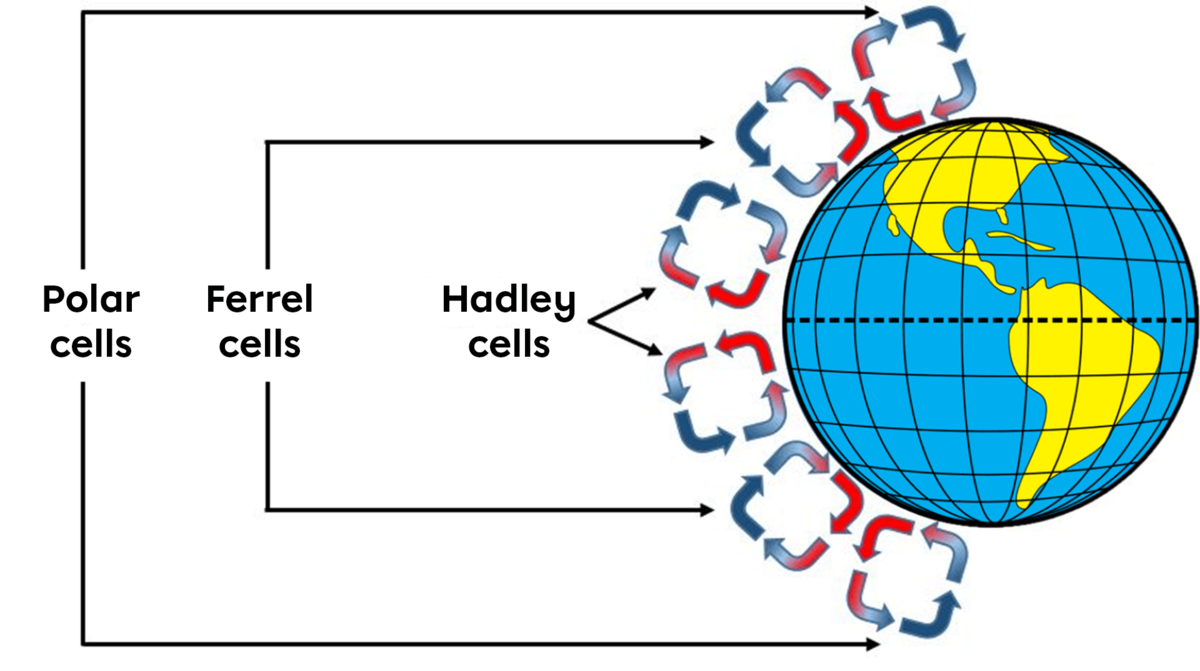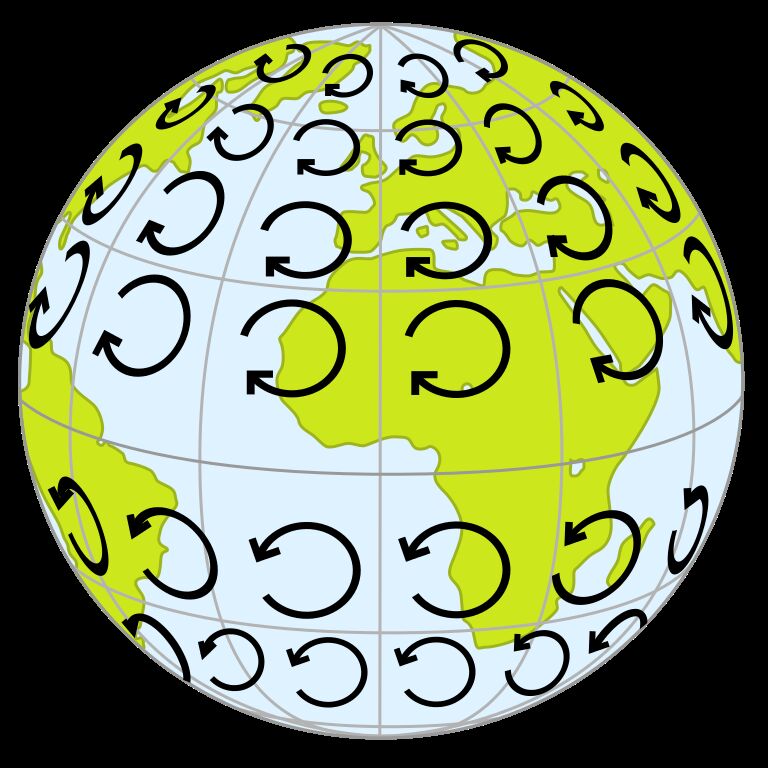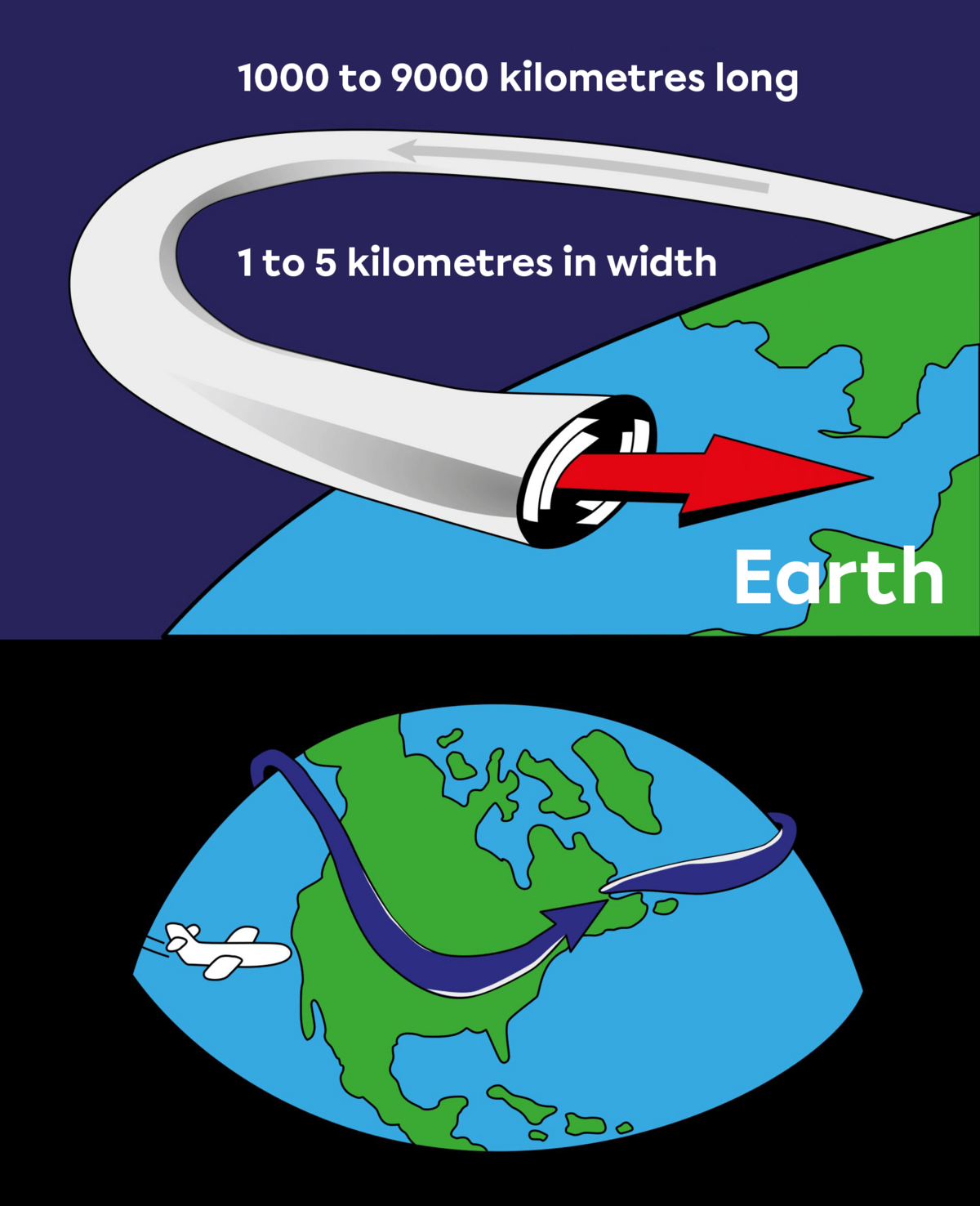Atmospheric circulation is the continuous movement of air masses around the Earth that redistributes heat from the Sun.
The air surrounding the Earth is constantly on the move. Because of its tilt, the Earth does not receive the same amount of solar radiation everywhere. The temperature at the Earth's surface is therefore not uniform.
Atmospheric circulation can be explained by various phenomena:
Convection movements represent the movement of air due to temperature variations caused by the unequal heating of the atmosphere by the Sun.
The air above the hot, humid regions of the equator is less dense. It rises to higher altitudes, then cools and becomes colder air, which descends because it is heavier than the warm air. As the air moves up and down, it generates the wind.

Because the Earth is so large, the cold air that converges on the equator does not come from the polar regions. The air is circulated by six major convection currents, in the shape of a loop, on either side of the equator.
Atmospheric circulation does not simply take place from the poles to the equator. There are three wind circulation loops between the equator and the poles:
- The first loop is called the Hadley cell. It lies between the equator and the 30th parallel.
- The second loop is called the Ferrel cell. It lies between the 30th and 60th parallels.
- The third loop is called the polar cell. It lies north and south of the 60th parallel.

These loops create the prevailing winds at the surface of the ground.
The Coriolis force is the force created by the Earth's rotation.
If the Earth did not rotate, the air would have to move in a straight line from the centres of high pressure to the centres of low pressure. But because the Earth rotates, the air follows a curved path. Air molecules moving in a straight line across the Earth's surface are therefore subjected to a force perpendicular to the speed at which they are moving.
This force deflects air movements to the right in the northern hemisphere and to the left in the southern hemisphere. At the equator, this force is zero, so there is no Coriolis effect at the equator.
The Coriolis effect means that, in the northern hemisphere, air flows clockwise around a centre of high pressure and counter-clockwise around a centre of low pressure.
In addition, at the surface of the ground, the air moves from an area of high pressure (cold air) to an area of low pressure (warm air) in order to fill the vacuum created by the movement of warm air rising to higher altitudes.
Jet streams are winds that move at high altitude, between 8 and 14 km above sea level, from west to east.
The jet stream takes the form of a corridor varying in height from 1 to 5 km and in width from 50 to 150 km. Over North America, the speed of the jet stream varies between 100 and 200 km/h. It can sometimes reach speeds of 400 km/h.
Jet streams are very useful in aviation: when an aircraft is flying from west to east, the jet stream acts like a tailwind, reducing flight time. However, when a plane flies from east to west, the jet stream can slow down the plane's speed because it is facing the plane.

